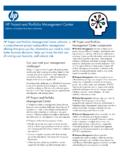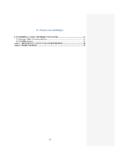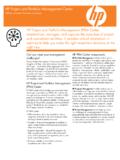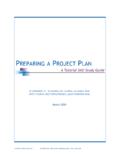Transcription of Guide to the Project Cycle - Quality for results
1 PC. Guide to the Project Cycle Q u a l i t y f o r R e s u lt s 2. All rights reserved. FAO encourages the reproduction and dissemination of material in this information product. Non-commercial uses will be authorized free of charge, upon request. Reproduction for resale or other commercial purposes, including educational purposes, may incur fees. Applications for permission to reproduce or disseminate FAO copyright materials, and all queries concerning rights and licences, should be addressed by e-mail to or to the Chief, Publishing Policy and Support Branch, Office of Knowledge Exchange, Research and Extension, FAO, Viale delle Terme di Caracalla, 00153 Rome, Italy. FAO 2012. Cover photo credits clockwise starting from bottom left: FAO/Sergio Pierbattista, FAO/Franco Mattioli, FAO/Alessandra Benedetti, FAO/Olivier Barbaroux, FAO/Olivier Thuillier Guide to the Project Cycle Q u a l i t y f o r R e s u lt s 2 P roj ect Cycle g u i de TABLE OF CONTENTS.
2 ACRONYMS 3. INTRODUCTION 5. I. Application of the guidelines 6. II. On line support 6. III. Project Cycle phases 6. IV. Project Task Force 7. PHASE 1 - IDENTIFICATION 10. Identification of a problem 10. Establishment of the Project Task Force 11. Preparation of the Concept Note 11. Appraisal of the Concept Note 12. Endorsement of the Concept Note 13. PHASE 2 - Project FORMULATION 20. Modalities for Project Execution and Implementation 20. Formulation of Project documentation 21. Guidance on Contents 24. PHASE 3 - APPRAISAL AND APPROVAL 43. Appraisal 43. Approval 47. LIST OF TEMPLATES. CONCEPT NOTE TEMPLATE 14. TEMPLATE FOR PEER REVIEW OF CONCEPT NOTE 18. Project DOCUMENT TEMPLATE 23 Project AGREEMENT TEMPLATE GCP 36 Project AGREEMENT TEMPLATE UTF 38 Project INTERDISCIPLINARY TECHNICAL. REVIEW TEMPLATE 48. Project APPRAISAL CHECKLIST TEMPLATE 49.
3 Blue boxes refer to Technical Cooperation projects, Red boxes refer to Emergency Response projects, Green boxes refer to Joint Programmes, and Grey boxes highlight contents which apply for all of the above. P r oj e ct cyc l e g u i d e 3. ACRONYMS. ADG Assistant Director General ADG-RR Assistant Director General and Regional Representative ADG-TC Assistant Director General of the Technical Cooperation AOS Administrative and Operational Services APO Associate Professional Officer CD Capacity Development CN Concept Note ComDev Communication for Development CPF Country Programme Framework CSAP Procurement Service CSF Finance Division CSO Civil Society Organization DAC Development Assistance Committee DEX Direct Execution DO Decentralized Office DRM Disaster Risk Management EA Environmental Analysis ECOSOC United Nations Economic and Social Council EIA Environmental Impact Assessment EOD Entry On Duty date ERM Enterprise Risk Management ES Economic and Social Department ESW Gender.
4 Equity and Rural Employment Division FAO Food and Agriculture Organization FAOR Country Representatives FLO Funding Liaison Officer FLU Funding Liaison Unit FPC Field Programme Circular FPMIS Field Programme Management Information System GCP Government Cooperative Programme GLO/ INT/ RE Global/ Interregional/ Regional projects GOE General Operating Expenses GPO Global Public Good HACT Harmonized Approach to Cash Transfers to Implementing Partners HQ Headquarters HRBA Human Rights Based Approach IASC Inter-Agency Standing Committee IDWG Interdepartmental Working Group ITR Interdisciplinary Technical Review LFA Logical Framework Approach LoA Letter of Agreement LTO Lead Technical Officer MDT Multidisciplinary Team MOSS Minimum Operating Security Standards MoU Memorandum of Understanding MoV Means of verification 4 P roj ect Cycle g u i de NEX National Execution NGO Non Governmental Organizations NIM National Implementation NR Natural Resources Department NTE Not To Exceed date OECD Organisation for Economic Co-operation and Development OEK Office of Knowledge Exchange, Research and Extension Division OR Organizational results OSP Office of Strategy.
5 Planning and Resources Management PAC Project Appraisal Committee PAO Project Appraisal Officer PG Practical Guidance PTF Project Task Force PRS Poverty Reduction Strategy PSC Project Support Cost QAR Quality Assurance Review RBM results -Based Management RO Regional Office RR Regional Result SFPO Senior Field Programme Officer SRC Subregional Coordinator TC Technical Cooperation TCDM Field Programme Coordination and results -Based Monitoring Service TCE Emergency Operations and Rehabilitations Division TCP Technical Cooperation Programme TCSR Resource Mobilization and Operations Support Service Division TSS Technical Support Service UNCT United Nations Country Team UNDAF United Nations Development Assistance Framework UNDG United Nations Development Group UNDP United Nations Development Programme UNFPA United Nations Population Fund UNICEF United Nations Children's Fund UNJP United Nations Joint Programme UTF Unilateral Trust Fund WFP World Food Programme P r oj e ct cyc l e g u i d e l i n e s 5.
6 INTRODUCTION. This Guide to the Project Cycle aims to the coordinating role of regional and sub-regional improve the strategic focus and Quality of offices in the management of the field programme;. FAO's projects and programmes. It has been adherence to UN system wide reforms of developed to enhance accountability and operational activities at the country level, including the adoption of new operational modalities under Quality through the application of results - both direct and national execution3;. based management principles and must be seen as a central tool to better position the Organization's resource mobilization efforts;. FAO in: meeting international standards more effective and transparent operations. on development effectiveness, supporting Another defining feature is that the five UN Common efficient country programming and more Country Programming Principles are mainstreamed into all phases of the Project Cycle .
7 It is widely agreed generally the decentralization process. that all five are necessary for effective UN-supported country programming that must balance the pursuit The Guide incorporates the principles and of international norms and standards with the requirements of FAO Reform, the Strategic achievement of national development priorities. The Evaluation of FAO Country Programming, the UN. principles bring value to problem analysis, and they General Assembly Resolution 62/53 on the Triennial help to identify possible strategies and responses Comprehensive Policy Review, as well as the Paris throughout the Project Cycle . Among the principles, Declaration and Accra Agenda for Action. it is important to distinguish between This document represents a single port of call1. Three normative principles: regarding Project Cycle guidance for all FAO staff and partners and foresees more transparent and Human Rights Based Approaches (HRBA)/.
8 Efficient web-based work streams. It supersedes Field Right to Food/ Decent Work Programme Circulars and Technical Cooperation (TC) Gender equality, and procedures2 concerning the Project Cycle . In addition to Environmental sustainability;. the above major aims, the guidelines should facilitate: Two enabling principles: better alignment of projects to national development Capacity Development (CD)4 and goals and FAO's own corporate Strategic Objectives;. results -Based Management (RBM). 1 Excluding for the time being TCP- and Telefood-funded activities. 2 FPC 2003/02 Field Programme Reporting Manual; FPC 2003/03 Clearance of Technical Backstopping Reports for Field Projects; FPC 2003/04. Project Cycle ; FPC 2004/02 Field Programme Manual; FPC 2004/03 FPMIS Automatically-generated ( trigger ) Messages; FPC 2004/04. Instructions Regarding the Disposal of Equipment upon Completion of Field Project Operations (Manual Section ); FCP 2007/02 Standard Project Document Format; FCP 2007/03 Standard Project Agreements; FPC 2007/07 Project Task Force Consultations Procedures for the Organization of Project Task Force; FCP 2007/09 Procedure for the Operational Clearance of Project Proposals; FCP 2008/01 Procedures and Responsibilities for Handling Field Documents; FCP 2011/01 Evaluation Provisions in Technical Cooperation for Development projects funded by Voluntary Contributions.
9 3 However, adjustments to the implementation phase are still required for national execution (NEX) and implementation (NIM) of FAO supported projects and programmes. NEX/NIM operational guidelines are being developed under the overall supervision of the IDWG on new operational modalities for the Field Programme, and will be reflected in these guidelines as appropriate. 6 P roj ect Cycle g u i de I. Application of the Guide II. On line support The present Guide applies to Technical Cooperation These Project Cycle guidelines, the accompanying and Emergency5 projects, including UN Joint Practical Guidance manual and all other procedural Programmes, with the exception for the time being explanations pertaining to the Project Cycle are currently of TCP6- and Telefood-funded projects. However, available on line in the FPMIS8. maximum effort will be made to maintain due synergy and harmonization with TCP's specific requirements.
10 III. Project Cycle phases Given their generic results -oriented and good practice nature, the methodology and tools illustrated here The Project Cycle comprises the following phases: could also be applied to other areas of work under 1. Identification, 2. Formulation, 3. Appraisal and FAO's Regular Budget, if deemed appropriate by the Approval, 4. Implementation and Monitoring, Budget Holder and managers concerned. 5. Evaluation, 6. Closure. The revised guidelines for Project identification and If compared to previous terminology, the revised formulation can be applied in a flexible manner by phases clarify the major steps to ensure adequate taking into consideration constraints of time, the and effective Project development and management human resources available and specific contexts arrangements. Each phase is supported (both ( Problem Analysis, Stakeholder Analysis, results methodologically and administratively) by specific web- Analysis and Strategy Analysis, Risk Assessment, based tools.)













